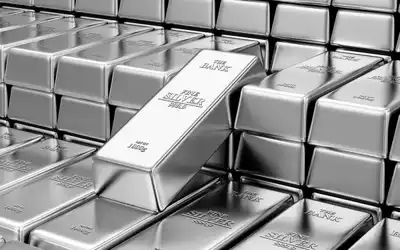Throughout history, silver has held economic significance, but its physical market is relatively smaller compared to other commodities, especially gold. While we produce nearly a billion ounces of silver annually, only around 20% is used for investment, resulting in a mere $4 billion yearly investment in physical silver, a fraction of the global investment landscape.
However, modern financial markets have transformed silver trading, enabling the notional value of silver, or any other durable investment commodity, to far exceed the amount produced. Today, trading occurs on paper, with futures contracts involving silver changing hands without actual delivery, leading to higher volumes and liquidity, driven by speculation on price movements rather than tangible physical transactions. This paper trading significantly influences the market, underscoring the relevance of silver investing beyond its physical limitations.
The Notional Value of the Silver Market is Not So Tiny
The majority of silver entering the market each year is new production, with a smaller portion coming from recycling. While supply and demand dynamics do influence silver prices, the precious metal differs from other commodities as it is also heavily traded as an investment for capital accumulation over longer time frames.
Silver, like gold, sees a significant amount of trading from investors, far surpassing the physical metal purchases. In the gold market, despite investors buying around $42 billion of physical gold annually, the total value of gold trades executed reaches a staggering $10 trillion per year, bringing substantial liquidity and volatility to the market.

The silver market is even more leveraged, with paper trading in silver amounting to $2.27 trillion yearly, indicating a substantial market size. This figure doesn’t even include over-the-counter trading, further emphasizing the vastness of the silver trading market, making it a significant player in the financial world.
This High Turnover Offers Significant Potential Opportunity
The significant trading activity in the silver market, with paper trading far exceeding physical holdings, results in considerable volatility, even more so than the gold market, which is already known for its high volatility due to leverage. While this may not be ideal for long-term silver investors seeking stable price accumulation, it can be advantageous for those seeking short-term returns through trading.
Over the past century, the price of silver, adjusted for inflation, has remained relatively stable. However, during this period, the price has experienced considerable fluctuations, at times worth much less or significantly more than its current value. Therefore, while long-term silver investments can potentially yield capital appreciation over 20 to 30 years, predicting silver’s performance is challenging due to its vulnerability to shifts in investor and trader sentiment.
Unlike gold, the silver market is more influenced by investor demand rather than central bank activity, making it more volatile and less stable. This characteristic can present opportunities for traders seeking to capitalize on silver’s price momentum and other influencing factors, but it may not be the ideal precious metal hedge for those looking to mitigate risks in other investments. Ultimately, the decision to invest in silver depends on individual objectives and risk tolerance, considering the unique nature of the silver market.
Deciding to Partake in the Silver Market
Two critical factors in deciding whether to invest in something are the potential for returns and the associated risks. Proper risk management is crucial in successful investing and trading, providing a significant advantage to professionals over amateurs who often overlook risk in their ventures, including investments in precious metals like silver.
Silver trading requires a more systematic and sensible approach to risk, not solely relying on subjective risk tolerance. Blindly investing in silver without closely monitoring market conditions can expose investors to higher risks and potential losses.
Unlike some traditional investments, silver trading demands careful attention to market conditions, as the merits of a trade depend solely on specific circumstances. Engaging in the silver market requires a calculated assessment of the trade’s probability of success, potential returns, and the implications of failure.
Various strategies, such as speculating on silver prices or using silver as a hedge, involve different levels of risk and return potential. Understanding the objectives of investments or trades is essential, as it determines the sensibility of the venture and the approach to managing risks.
While the silver market does carry higher risk, it also presents opportunities for attractive returns if investments are well-timed, based on sound analysis of market probabilities. By effectively managing risks and aligning trades with probabilities, investors can navigate the silver market, or any other market, with a greater chance of success.




